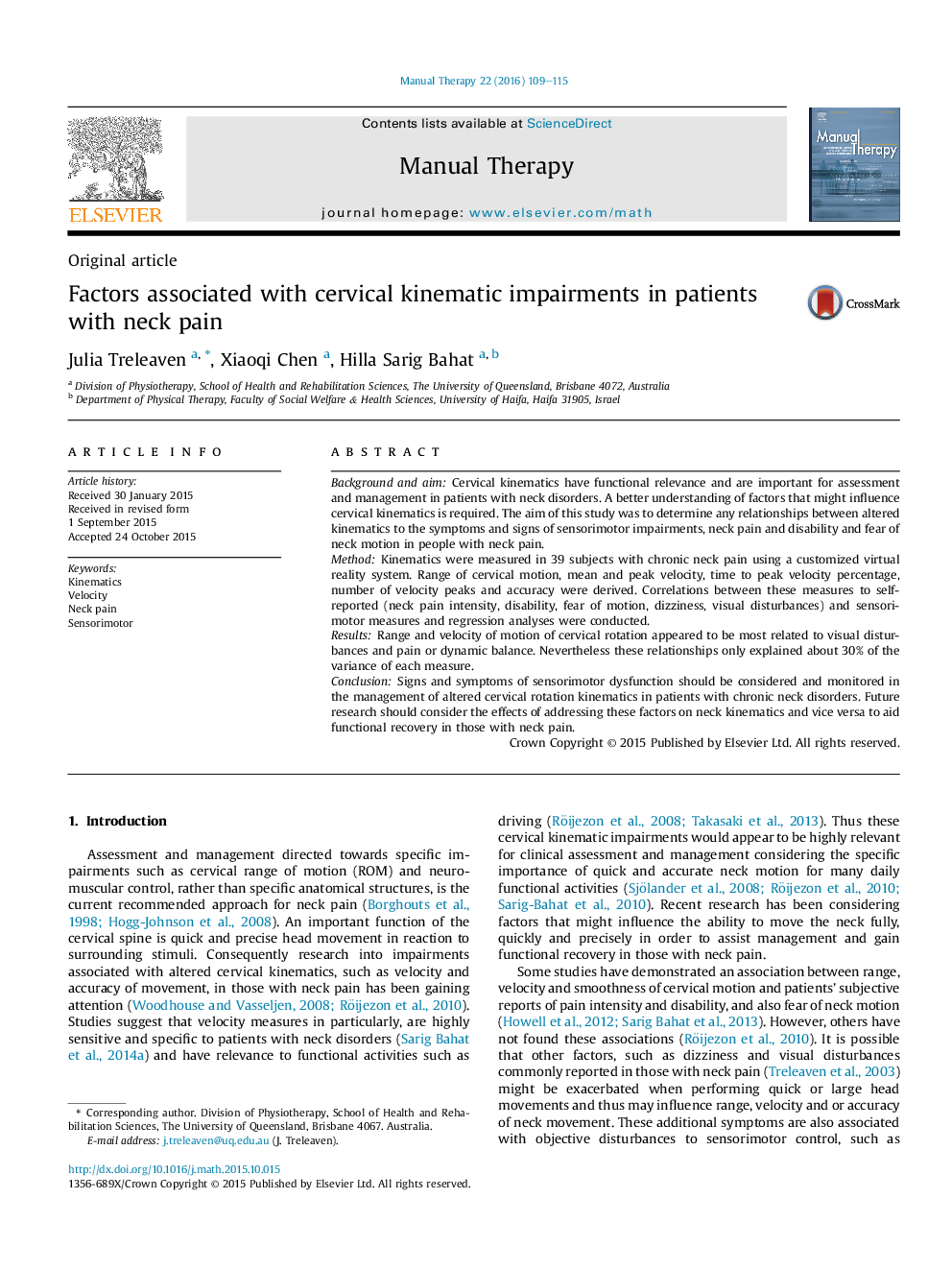| Article ID | Journal | Published Year | Pages | File Type |
|---|---|---|---|---|
| 2624935 | Manual Therapy | 2016 | 7 Pages |
•There are many potential factors that might influence cervical kinematics.•Rotation range of motion related most to pain and visual disturbances.•Rotation velocity related most to visual disturbances and balance.•These factors should be considered in management.
Background and aimCervical kinematics have functional relevance and are important for assessment and management in patients with neck disorders. A better understanding of factors that might influence cervical kinematics is required. The aim of this study was to determine any relationships between altered kinematics to the symptoms and signs of sensorimotor impairments, neck pain and disability and fear of neck motion in people with neck pain.MethodKinematics were measured in 39 subjects with chronic neck pain using a customized virtual reality system. Range of cervical motion, mean and peak velocity, time to peak velocity percentage, number of velocity peaks and accuracy were derived. Correlations between these measures to self-reported (neck pain intensity, disability, fear of motion, dizziness, visual disturbances) and sensorimotor measures and regression analyses were conducted.ResultsRange and velocity of motion of cervical rotation appeared to be most related to visual disturbances and pain or dynamic balance. Nevertheless these relationships only explained about 30% of the variance of each measure.ConclusionSigns and symptoms of sensorimotor dysfunction should be considered and monitored in the management of altered cervical rotation kinematics in patients with chronic neck disorders. Future research should consider the effects of addressing these factors on neck kinematics and vice versa to aid functional recovery in those with neck pain.
